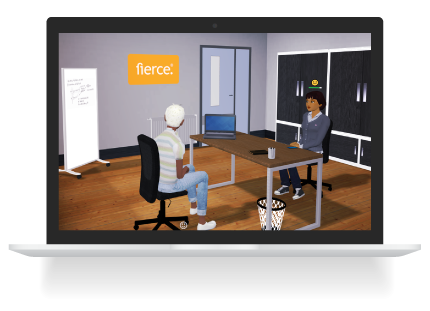
The world of leadership development training has been in flux for some time now — even before the global coronavirus pandemic. More and more businesses are demanding scalable learning that can be implemented at lightning speed, is easily digestible, and most importantly, sticks. Microlearning is a powerful way to make that happen.
Here’s its definition: “…a method that uses small moments of learning to drive job performance and employee development…[It] is short and to the point, based on a topic or problem.”
The brain can only take in so much information before it reaches overload. According to the Cognitive Load Theory proposed by John Sweller, people have a maximum capacity for learning at any one time. It’s like trying to fit two liters of water in a cup. At one point, the cup will overflow and no more water can be contained.
Some might propose getting a bigger cup, but the far better solution is to pour smaller amounts! That’s what microlearning offers. And that is what learners need.
The Benefits of Microlearning
With everything from elementary school to corporate training now taking place online, our understanding and embracing of microlearning are critical. In truth, it’s always been critical, but in today’s reality, perhaps this is the opportunity to make it our chief focus and highest priority. If we can, if we will, our learners will thank us!
Recent research shows that microlearning improves training engagement by 50 percent, while also enhancing knowledge retention by more than 20 percent. In addition, studies have shown that this quick and easy learning modality means employees are spending up to 40 percent less time in training.
Above and beyond the reality of higher knowledge retention and better learning, is the HUGE benefit of convenience that bite-size learning provides!
For me, even though I’m no longer in an office, I somehow feel busier than ever while remote working! I move from one Zoom meeting to the next, crank out emails in the in-between moments (or way too early in the morning), and if lucky, find time to grab some food (which usually just means more coffee)!
The idea of sitting down for two hours of training, though luxurious, wouldn’t work for me right now – no matter how much I might enjoy it. But 15 minutes, or so? A quick “hit” of something that helps me do my job better? Not only is that doable, but I’d actually look forward to the respite, the encouragement, and time that’s just for me!
I’m hardly alone in this. Our world is moving faster and faster, despite the forced-slowing of COVID-19. Business leaders recognize just how precious people’s time actually is.
Providing employees the most potent benefit in the shortest amount of time is not only desired but practical, especially during this pandemic.
Though often bundled into “soft-skills,” microlearning is anything but. It’s pithy and practical. It allows us to target training to address extremely specific and timely situations. Examples we have been working on at Fierce include how to have conversations about the coronavirus mask debate, diversity and inclusion, dealing with remote working, and SO much more.
Bite-size learning allows us to provide what’s most needed in the moment and it doesn’t take more than a few moments to absorb! This is exactly why we’re incorporating this into our own training offerings.
We are proud of our content, our training, our facilitators, and the way in which we create in-person (even virtual) experiences that are vibrant, robust, and memorable. When we made the decision to provide that same content with no facilitator or trainer at all – completely self-paced and self-led – we wondered about its efficacy, its “stickiness,” and its impact.
The Future of Bite-Size Learning
The result? We didn’t need to worry nearly as much as we did! Leaning on brain science and trusting our learners, we’ve watched microlearning work its magic. Nothing has been compromised and, in fact, much has been gained as we can now offer our content to countless more people with no instructor required to convey the message or cement the learning.
We then pushed the bite-size learning envelope even further with 3D Simulations – a new way to train using virtual, real-world short scenarios that can be completely customized to address any problem no matter how complicated. Seeing this as the future of microlearning, we asked ourselves, “Can we create short and highly interactive scenarios that allow users to experience both the pluses and the minuses of particular conversational choices?”
More microlearning magic, to be sure! In under 15 minutes, learners are immersed in a familiar scene (their workplace, a storefront, the nurse’s station at a hospital) and given opportunity to practice the very conversations they either avoid or fear will fail – all with complete psychological safety, real-world visuals, immediate feedback, and amazing opportunity to learn through experience.
In a world pulled to disparate extremes, riddled with tension and conflict, and experiencing more distance between humans than ever before, we need training on how to have conversations that enrich relationships.
We need training on how to have conversations that get results. We need training on how to not avoid the conversations that most need to take place. And we cannot wait until we’re all back together again or until things settle down. Microlearning is one way in which we can enable critical training now – without compromising content or quality.
Those of us in the learning and development space are committed to helping people learn. It’s a worthy effort. How might our learners be better served if, in addition, we were committed to adapting to how we train?
Instead of pouring way too much water in the cup, organizations can acknowledge capacity and utilize new, exciting training opportunities to offer just the right amount at just the right time and in just the right way.
Tags: #Leadership Development, #Microlearning, #Training






